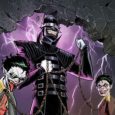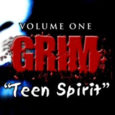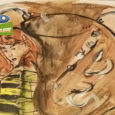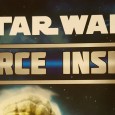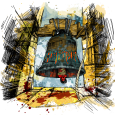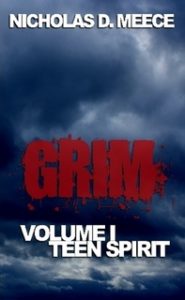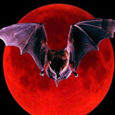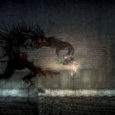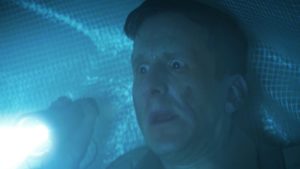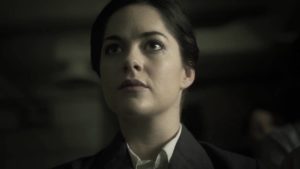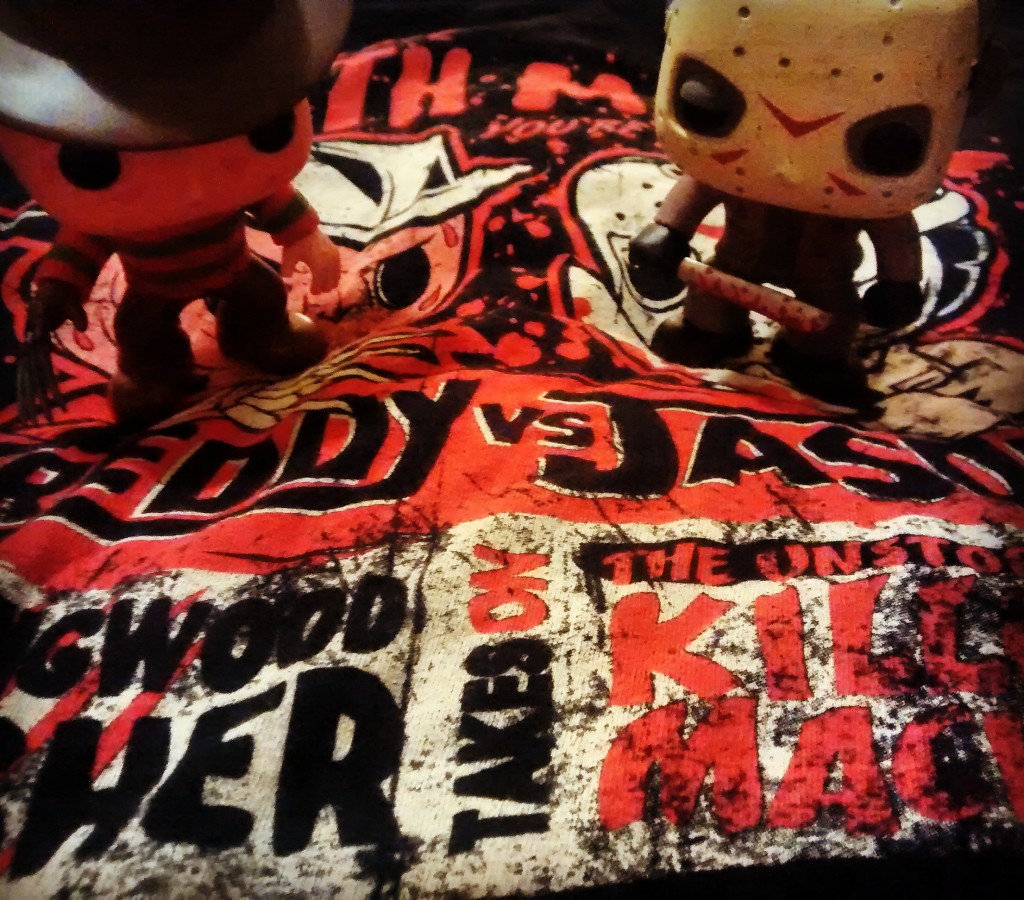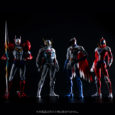March 26, 2014 was a sad day in television as it marked the final episode of Psych on USA Network. Millions of fans across the country thought that was the last they’d see of Shawn Spencer and Burton Guster, the duo responsible for the titular psychic detective agency. Little did we Psych-Os know the showrunners had another trick up their sleeve: a movie. Airing on December 7th, Psych: The Movie reunites the bulk of the main cast and I, for one, couldn’t be more excited.
In preparation of the movie, I sat down and revisited all 8 seasons of Psych, which was no easy task since the show was removed from Netflix and I had to watch everything on DVD. Can you imagine swapping out all those discs as each episode ended? It was exhausting.
Anyway, here are my picks for the top 15 episodes of Psych. Wait for iiiiiiit…
—————————————————————————————————————————–
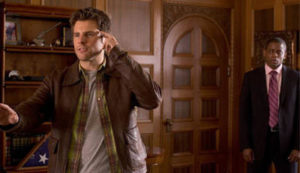 Pilot
Pilot
Season 1, Episode 1
Pilot episodes usually aren’t the best episodes of any series; it often takes time for the characters’ personalities to gel and worm their ways into our hearts. But in the case of Psych, the characters are pretty much as they are fresh off the page. Shawn Spencer (James Roday) is lazy and unambitious despite his gift of hyper-perception and deductive reasoning. He uses this gift to call in numerous tips to the police in an effort to collect reward money but when the cops start to suspect him as the culprit, his only out is to feign psychic powers. Though he’s met with some skepticism, courtesy of Santa Barbara head detective Carlton Lassiter (Tim Omundson), he convinces the interim police chief Karen Vick (Kirsten Nelson) to bring him on a case. At that point, Shawn drags his best friend and enabler Burton “Gus” Guster (Dulé Hill) along for the ride. We also get a look at Shawn’s strained relationship with his father, Henry (Corbin Bernsen), an ex-cop who is not too happy with Shawn lying to the cops, but when he goes to bat for Shawn and reveals what he’s willing to do for his kid.
—————————————————————————————————————————–
 Scary Sherry: Bianca’s Toast
Scary Sherry: Bianca’s Toast
Season 1, Episode 15
When a sorority hazing goes badly and ends with the death of a college girl, the incident is written off as a copycat suicide based on the death of Santa Barbara’s urban legend, Scary Sherry. Juliet (Maggie Lawson), however, goes undercover in the sorority to investigate deeper, asking Shawn and Gus for help. “Scary Sherry: Bianca’s Toast” doesn’t feature any big name guest stars or off-beat musical improv but the teacup scene is one of the funniest moments in the show and I’m including it on this list for that alone. Also, the B-plot with Lassiter training an elder rookie has some great moments.
—————————————————————————————————————————–
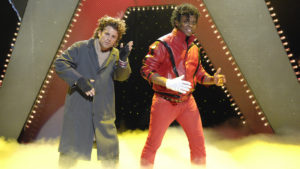 American Duos
American Duos
Season 2, Episode 1
When a judge on the hit singing competition reality show “American Duos” has a few brushes with death, he goes to the Santa Barbara police for protection. A parody of Simon Cowell, Nigel St. Nigel is portrayed to perfection by a smug Tim Curry and his performance carries the episode. Bonus points for the second special guest star, Gina Gershon, playing a booze-riddled and absent-minded former pop star, a clear lampooning of Paula Abdul. Bonus bonus points for the episode also giving us James Roday and Dulé Hill dressed as Roland Orzabal and Michael Jackson while performing Tears for Fears’ “Shout.”
—————————————————————————————————————————–
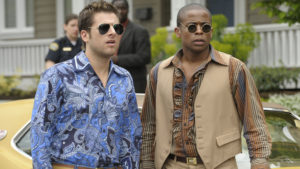 Disco Didn’t Die. It Was Murdered!
Disco Didn’t Die. It Was Murdered!
Season 3, Episode 5
“It’s a big birthday cake!” Taking its influence from the pop culture of the 70s, including shows like The Mod Squad and movies like Shaft, Shawn and Gus are called in to find new evidence in a case that was recently overturned, which just so happened to be the biggest case of Henry Spencer’s career. The trio need to track down clues which brings smack dab into the middle of the 70s; from the polyester shirts to a ’73 Mercury Cougar to a 70’s-themed disco run by a dude named “Pookie,” “Disco Didn’t Die” hits all the notes to fan the flames of nostalgia in the most humorous way possible.
—————————————————————————————————————————–
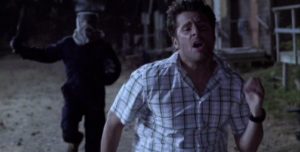 Tuesday The 17th
Tuesday The 17th
Season 3, Episode 15
Written and directed by James Roday, “Tuesday the 17th” is the first episode that takes film homage to the next level by taking influence from classic horror movies. When an old camp friend approach Shawn and Gus to investigate the disappearance of a counselor at his new camp, they soon find themselves being stalked by a masked slasher. But the swerve, that the camp is meant to be a murder mystery camp where people figure out the identity of the killer, is met with another swerve, wherein a real killer is picking off the counselors one by one. The episode features almost every horror movie trope known to man and, in general, has a ton of fun with the premise.
—————————————————————————————————————————–
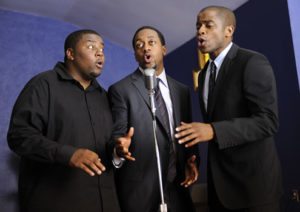 High Top Fade-Out
High Top Fade-Out
Season 4, Episode 7
There are a lot of things to point to as making “High Top Fade-Out” a great episode. It features guest appearances by Jaleel White and Kenan Thompson as old college friends of Gus, as well as 50% of Gus’s college singing group, Blackapella. Tony Todd also makes an appearance though slightly less Candyman and more undercover cop. The episode marks the introduction of Kurt Fuller as coroner Woodrow Strode, a character that would make multiple appearances through the series and become more off the wall each time. The intro song was rerecorded by Boyz II Men as a way to cement the singing quartet theme. But probably my favorite part of the episode is Dulé Hill’s performance. Though he’s never been a slouch in any episode, he emotes a full range from anger to pain to concern as he works to repair his relationship with his friends. Every minute of it is fantastic.
—————————————————————————————————————————–
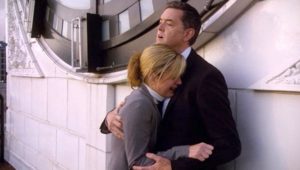 Mr. Yin Presents…
Mr. Yin Presents…
Season 4, Episode 16
The second episode in the Yang trilogy, “Mr. Yin Presents…” is a love letter to Alfred Hitchcock. The murder of a waitress leads Psych and the police to discover that Yang was working with a partner, the mysterious Mr. Yin. After Shawn fingers Mary Lightly (Jimmi Simpson) as the killer, he realizes how wrong he is when Mary winds up dead, murdered in the same manner as Detective Arbogast from the Hitchcock film Psycho. The gang soon find themselves in a trap, each playing a role from different Hitchcock movies; Shawn as L.B. Jefferies from Rear Window, Henry as Mark Rutland from Marnie, etc. The episode is filled with references to Hitchcock, both visual and in dialogue. It’s a fantastic watch and leads to some great character development for the rest of the series.
—————————————————————————————————————————–
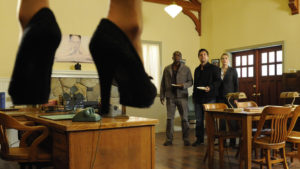 Dual Spires
Dual Spires
Season 5, Episode 12
Despite the recent revival, Twin Peaks was one of those cult shows that had a rabid fan base but never really struck a chord with the culture at large. The showrunners of Psych however, found enough to work with and centered an entire episode around its atmosphere. Featuring many of the original stars of Peaks, “Dual Spires” plops Shawn and Gus in the center of a small mountain town where the people are a little off-beat, forcing them to dig through the residents’ idiosyncrasies to discover the truth behind the murder of a young woman. Dana Ashbrook, Ray Wise, and Sherilyn Fenn all make appearances, as well as Chris Isaak’s “Baby Did a Bad Bad Thing” in a nod to the 1992 Twin Peaks movie, Fire Walk With Me.
—————————————————————————————————————————–
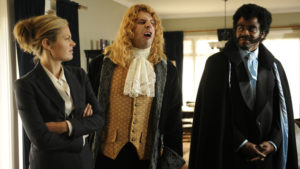 This Episode Sucks
This Episode Sucks
Season 6, Episode 3
Don’t let the title fool you; the episode is actually pretty good. Admittedly, I almost didn’t put it in but the more I thought on it, the better it became. This is the vampire episode and the showrunners went all in making that apparent. The episode not only guest stars Kristy Swanson and Corey Feldman, both vampire famous in their own right, but Tom Lenk show ups, who had a recurring role in the Buffy TV series. “This Episode Sucks” essentially benches Shawn and Gus, relegating them to second fiddle as they freak out over the idea of vampires in Santa Barbara (though they do dress up as famous vampires; Shawn as Lestat and Gus as Blacula). Despite all of that, I like this episode as it gives Lassie a chance to shine. It introduces Marlowe as his love interest which sets up his character arc for the remainder of the series. Shawn and Gus may be the protagonists of the show but it’s nice when some of the other characters get the spotlight.
—————————————————————————————————————————–
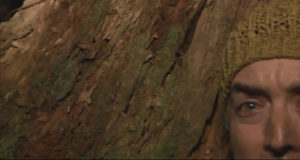 Lassie Jerky
Lassie Jerky
Season 7, Episode 3
There’s no denying the impact found footage films have had on the movie industry. Luckily, the writers of Psych recognized this and blessed us with their own take on the genre. Wrapped around the search for Bigfoot, “Lassie Jerky” finds Shawn and Gus in the woods with some college film students when they stumble upon three dead bodies. The episode is a masterpiece shot from all first-person perspectives and perfectly homages the classic found-footage film, The Blair Witch Project. It also guest stars WWE’s Big Show and has probably my favorite scene in the entire series, an impromptu acapella rendition of the Bangles’ “Eternal Flame.”
—————————————————————————————————————————–
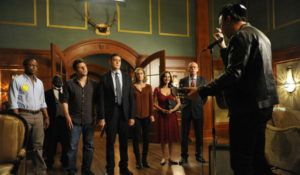 100 Clues
100 Clues
Season 7, Episode 5
The landmark 100th episode of the series. Shawn gets himself invited to a dinner party in a swanky mansion and tries to smooth his relationship woes with Juliet. When she can’t make it, he brings Gus along and discovers that the party was thrown by a recently released from jail rock icon, Billy Lipps, with all of the party guests tied to the case that sent him to prison. A riff on the movie Clue, “100 Clues” was promoted with a real-time contest that allowed viewers to choose who the killer of the episode really was by using a special hashtag on Twitter. Much of the humor in the episode is based on Clue and also includes three of the film’s stars as guest stars: Leslie Ann Warren, Martin Mull, and Christopher Lloyd.
—————————————————————————————————————————–
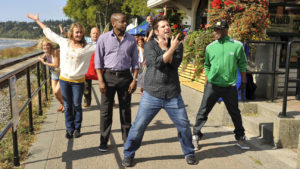 Psych: The Musical
Psych: The Musical
Season 7, Episodes 15 & 16
This might be cheating a bit as it spans two episodes but “Psych: The Musical” originally aired as a 2-hour special so suck it, I’m counting it. Though I’m not a fan of musicals, I wholly enjoyed this episode, if only because of how they made each of the musical interludes diegetic. Shawn and Gus are tasked with tracking down an escaped mental patient, a deranged writer who learns that a version of his play based on the Jack the Ripper murders, is premiering at the local playhouse. There are a number of highpoints in the episode, including the return of Ally Sheedy in her role as Yang, Anthony Rapp, best known for as Mark in Rent, and Dulé Hill as “Jamaican Inspector Man.”
—————————————————————————————————————————–
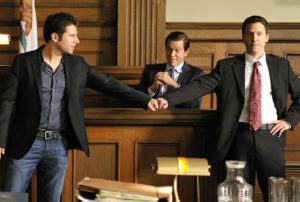 Remake A.K.A. Cloudy…With a Chance of Improvement
Remake A.K.A. Cloudy…With a Chance of Improvement
Season 8, Episode 3
One of the more off-beat episodes of the entire series sees the gang remaking an episode from the first season as a commentary on Hollywood’s remake culture. “Cloudy…With a Chance of Murder” focused on a school teacher who was charged with the murder of the local weatherman, with Shawn and Gus assisting her legal team in getting her acquitted. “Remake” follows that same premise but peppers it by recasting the guest stars, many of whom had already appeared in other episodes as completely different characters. Thankfully, they also saw fit to change the murderer and the method behind the murder, so as to deliver an almost new mystery. My favorite part, though, was the appearance of Ed Lover as the court bailiff and his delivery of the classic “come on, son” line.
—————————————————————————————————————————–
 Nightmare on State Street
Nightmare on State Street
Season 8, Episode 9
I really seem to like the episodes that homage classic horror movies, huh? Anyway, “Nightmare on State Street” has a lot going for it, most notably guest star Bruce Campbell. The film focuses on Gus’s nightmares, which stem from Shawn’s absence and leads directly into the end of the series. As such, the episode devotes significant time to A Nightmare on Elm Street, and more than just the title. But the episode also references Night of the Living Dead and Texas Chainsaw Massacre, all while framed within Gus’s dreams. Other guest stars round out the fun, such as Dean Cameron, who played Chainsaw in one of Shawn’s favorites, Summer School, William Zabka, a.k.a. Johnny Lawrence from Karate Kid, and Phylicia Rashad, who returns as Gus’s mother. “Nightmare on State Street” aims for horror lovers and hits the mark with its numerous references. Oh, and zombie Curt Smith.
—————————————————————————————————————————–
 The Break-Up
The Break-Up
Season 8, Episode 10
I really needed to add the series finale here, mostly because of how well it ties up each characters’ arc. Shawn has a difficult time telling Gus that he’s moving to San Francisco to be with Juliet, especially after Gus manages to find a new job and get his life back on track. This episode shows the depths of Shawn and Gus’s relationship, with Shawn blaming himself for disrupting Gus’s life but Gus uprooting himself to be with his best friend. It also gives us closure to Lassie’s respect for Shawn when he refuses to listen to Shawn’s video confessional that he’s not a real psychic despite years of Lassie’s skepticism. We also get to see McNab finally promoted, assuming the title of detective despite having the worst score Lassie has ever seen. All of this is wrapped up alongside guest appearances by two actors idolized by Shawn; Billy Zane and Val Kilmer. “The Break-Up” is an emotional finish to a hilarious train ride and, in my opinion, the perfect way to end the series.
—————————————————————————————————————————–
Boom boom boom… Wrap up! I know a lot of my fellow Psych-Os out there may disagree with a few of my choices, which is fair. Narrowing down a list like that has been one of the hardest things to do, especially with a show as diverse as Psych has been through the years. So hey, if you disagree with me, let me know! What is your favorite episode? And what are you most excited for from the upcoming movie? Feel free to drop a comment down below or you can find me on Twitter, @IdiotAtPlay, and tweet me your picks.
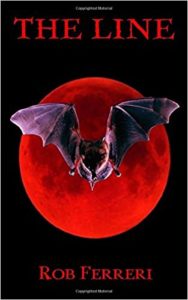 Vampires are a staple of Halloween and one of the most famous horror icons around. So I figured reading a vampire tale for Hallow-Reads was as good an idea as any. That’s when I was presented with The Line by Rob Ferreri, a self-published novel about a team of vampire hunters.
Vampires are a staple of Halloween and one of the most famous horror icons around. So I figured reading a vampire tale for Hallow-Reads was as good an idea as any. That’s when I was presented with The Line by Rob Ferreri, a self-published novel about a team of vampire hunters.
The Line tells the story of Alexander, an immortal ex-vampire and his mission to hide an ancient amulet from Dorian, his ex-master. When the amulet is discovered in present day New York, Alexander assembles a team to help him combat the vampire threat and protect the amulet. The team, which he dubs “the Line” are chosen ones, people who come from a long line of vampire slayers. The plot boils down to Buffy the Vampire Slayer meets The Avengers and works in many ways. However, there are quite a few ways that it just falls flat.
The book opens with a scene of our Alexander being healed of his vampirism and turning against his former brethren. It’s an interesting concept, one that doesn’t get explored often in pop culture, but it also doesn’t get explored much here, either. We know Alexander had a history as a vampire and worked with Dorian, but Ferreri never delves into that. There’s no back story showing us how Alexander became a vampire or what regrets he may have. We’re only told he was a vampire, isn’t any more, and now wants to rid the world of vampires.
The dialogue tags were the most tedious part of the book. Dialogue tags should be straightforward as the most effective ones are a simple “she said” or “he asked.” Sure, it’s great to mix them up a bit for some exclaiming, questioning, or accusing. But The Line makes them all as homogenous as possible. Every dialogue tag follows all of the dialogue. Every time. Now, this isn’t how most authors handle it; in scenes with two characters, for example, it’s generally easy to follow the flow of the dialogue, making the need for a tag each time unnecessary. But Ferreri uses them for every line and it gets very distracting.
From my understanding, The Line was originally written as a screenplay, and after reading it, that’s fairly obvious. The dialogue tags, for example, reminded me of slugs, the character name that precedes each line of dialogue, making it easy for the actor to know which lines are theirs and which belong to their costars. Sure, Ferreri punches up his dialogue with adverbs, but these are little more than parentheticals, the stage direction used to indicate how the actor should deliver the line.
This isn’t the only similarity The Line as a novel has to a screenplay. The book focuses a lot on the action; every few pages, a new action scene occurs. Whether it’s a showdown between the protagonists and the bad guys or some sort of training exercise, action scenes take precedence. Which makes sense considering The Line is a vampire based action adventure more than anything else. However, this focus detracts from any sort of character development, of which there is very little.
The Line is straight forward, to the point, and exactly what one could expect from a ninety minute action flick.
Does a novel need chapters of deep backstory to be enjoyable? No, not at all, but unlike movies, novels aren’t constrained by a certain length. There’s no hard and fast rule that a novel should be a set number of pages. In that sense, novels have an advantage over films when it comes to character development.
The Line implements a sort of ticking clock, yet another action movie trope. Alexander and Co must stop Dorian from getting the other half of the artifact before the next lunar eclipse or the world will suffer. Because of this, the plot moves at hyperspeed. Characters are introduced, destinies explained, trainings held, and lots of fight. There’s no time to get to know the cast. We see them put through the wringers of training a total of one time before they accept their fate. They trust each other implicitly after knowing each other for at most a couple of days. There’s very little internal conflict and it gets resolved in a page or two, which diminishes the stakes.
The parallel between The Line as a novel versus a screenplay makes sense when you look at author Rob Ferreri’s history. He’s worked on a few full-length feature films, most of which were made prior to the publication of The Line. He clearly has a strong grasp of writing, but it seems that scripting is a difficult habit to shake. Novels and screenplays are two different creatures and what works in one doesn’t necessarily work in the other. I don’t feel that his writing style is bad; just that it’s not the ideal approach for a novel.
Don’t get me wrong; there are quite a few good parts about The Line, most notably the character introductions. When we meet each of the characters, they get the spotlight in their own little vignette of a story. Detective Jay Hong is ambushed during one of the biggest cases of his career. The Blades brothers, Diego and Julian, are career criminals and we first see them during a high-octane car theft and eventual chase. Lena Somnianti is a sophisticated artist and fencer, a well-travelled and intelligent woman. They all make grand entrances, yet don’t really live up to their promise. Sure, they’re competent enough in their own right but none of them ever feel fleshed out besides what we learn at the outset.
This is really the fatal flaw of The Line. It never really lives up to its own story. It’s complete, has a plot and a diverse cast, but that’s the bare minimum when dealing with a novel. As a film, The Line would have been magnificent fun. More Underworld than Anne Rice, it didn’t quite fit into my idea of “horror” so it probably wasn’t the best entry for Hallow-Reads, but I still found myself engrossed in the tale as it unfolded.
The Line is available on Amazon. You can also see more of Ferreri’s work by visiting his comic publisher, Evil Kat Comix.
Grade: C
Don’t forget to try our Ten Family Friendly Halloween Movies to help lull the kiddos into a candy coma! Afterward, you can set the mood with Five Albums to Flesh Out Your Halloween Playlist and huddle under the covers with Netflix and Chilling – Halloween Movie Edition. Any other off-beat Halloween suggestions to throw our way? You can let us know on Twitter @SubCultured or come party like its 1599 in our Discord server!
Halloween is one of my favorite holidays. Besides all of the cute decorations, cooler weather and delicious special edition food and candy, it’s also the time to plant oneself in front of the television and binge watch scary movies. But what does one do when movies get boring? Turning to books is usually a good idea. Thankfully there’s a subset of writers who focus on telling spooky, scary, or downright grisly tales that are best enjoyed during Halloween. I had the chance to check out one of these tales, Grim, Volume I: Teen Spirit, by Nicholas Meece.
Teen Spirit starts with a grisly murder outside of a nightclub in a small town before transitioning to the story of Steve, a teenager and budding writer, and his best friend, Jen. They share a passion for filmmaking and horror movies, so when Steve tells Jen about the murder and convinces her to investigate it with him, she’s all in. The murders don’t stop there, though, as the Reaper, as he’s known, tears through the town, killing people very close to Steve’s and Jen’s houses.
While I enjoyed Teen Spirit, I do have to say it’s full of missed potential. There are a lot of great moments in it, such as the opening prologue with the murder, which sets the tone for the horror-themed story. However, once our main characters are introduced, a lot just seems to get lost along the way. We meet Steve and find his passion for writing leads him to lock himself in his bedroom for hours on end to finish a work in progress. He’s secretive about his hobby, not allowing anyone to read his stories until he feels they are perfect. He’s in love with his best friend Jen and wants their relationship to blossom into more than just friendship, but they also plan on moving to California and living together, which is slightly weird but at least makes some sort of sense.
Steve gets the most depth while, unfortunately, Jen is more of a one-note character. We know she’s interested in filmmaking and wants to move to California. She likes Steve’s company but doesn’t see him romantically like he sees her. That is, until she’s told that she does see him romantically by a mutual friend. It’s an odd exchange and one that doesn’t really feel natural. In fact, most of the women in the book come off as caricatures, more like plot devices than real women. The exchanges between Jen and her friend Angela feel forced and stilted. There are so few of them that they’re easy to overlook, but the book is so short that these exchanges are huge chunks of the word count.
I thought the story started to pick up around the time Steve convinces Jen to investigate the murder with him. This could have made for an interesting tale and was the thread that I was most looking forward to; two teenagers struggling to use second hand knowledge of police procedurals and figure out who committed a grisly murder would have made for an intriguing tale. Couple that with the twist ending and Steve’s true agenda could have made it even more engaging. It soon becomes apparent, though, that their sleuthing isn’t the purpose of the tale. Meece is taking his love for horror movies and creating a slasher story. However, with a little fleshing out, he could have blended the two genres and created something with a little more meat on the bone.
That’s not to say Teen Spirit isn’t entertaining. It’s just heavily bogged down in horror movie tropes. A couple of fresh out of school kids in their sexual prime. An alcohol-fueled house party that swells out of control. The caring, housewife who’s concerned for the wellbeing of her taciturn son. The inclusion of all of these seem intentional based on Meece’s love of horror. After reading through Teen Spirit, I didn’t quite make this connection and the tropes bothered me. However, I dwelled on the story for a few days before starting writing this and I developed a deeper appreciation for it.
It’s hard for me to go into depth for a review of Teen Spirit only because of how short the story is. I read it entirely in a single train ride of only about an hour, which isn’t a lot of time for a “book.” That’s why my biggest disappointment with Teen Spirit is its length. As I mentioned earlier, there were plenty of areas that Meece could have elaborated on the story, delving deeper into character histories and motivations and actually following through with Steve and Jen’s intentions of tracking the killer. I assume he didn’t do this because he intended to write a short and sweet slasher tale which, if that is the case, he at least succeeded in doing. One benefit Teen Spirit does have is its cliffhanger ending, hinting at a much larger story looming in the distance. As of the time I’m writing this, there has not been a release of Grim, Volume 2, which is slightly disappointing. Hopefully, that’s still on Meece’s “To Do” list and hasn’t been abandoned completely.
All in all, I would recommend Grim, Volume I: Teen Spirit if you’re bored with horror movies on Netflix and are just looking for a change of pace. While it’s not as deep as a Stephen King novel, it provides a quick dose of horror-fueled entertainment. Not too long to get boring, but just long enough to create a creepy, slasher atmosphere. And if you crave more, you can always check out Meece’s non-fiction and movie reviews over at www.morbidmuch.com. He’s definitely a proponent of horror and a voice that adds to the genre.
Grade: B-
Don’t forget to try our Ten Family Friendly Halloween Movies to help lull the kiddos into a candy coma! Afterward, you can set the mood with Five Albums to Flesh Out Your Halloween Playlist and huddle under the covers with Netflix and Chilling – Halloween Movie Edition. Any other off-beat Halloween suggestions to throw our way? You can let us know on Twitter @SubCultured or come party like its 1599 in our Discord server!
Looking for a new spooky game?
Just in time for the Halloween season, Bigmoon Entertainment and Camel 101 announced today that their new space survival horror title, Syndrome, is available on select systems. Syndrome traps players aboard a desolate scientific spaceship full of terrifying monstrosities creeping around every corner, with only stealth and evasion to trust while they unravel the deep mystery surrounding the deaths of fellow crewmen. Check out the release trailer below!
“It’s been a truly long-awaited milestone to bring Syndrome to console players, and we are excited to offer the game on virtual reality platforms as well”, said Paulo J. Games, Game Director of Bigmoon Entertainment. “With VR, the sinister atmosphere and blood-curdling suspense is as real as it gets. We can’t wait to hear the feedback from players and hope that it was worth the wait.”
Syndrome takes the horror genre back to its terrifying roots as players wake up on a deserted and adrift spaceship, dazed and confused from a deep cryosleep, only to discover that most of the crew are dead, or… changed. In order to survive the horrors that lurk in the shadows, players must explore the eerie confines of the ship in search of the last few weapons aboard, moving as stealthily as possible to evade direct enemy combat. Amidst numerous reactive adversaries awaiting close by, players interact with keypads and computer consoles to find clues as to what happened aboard and how to escape the deadly syndrome alive.
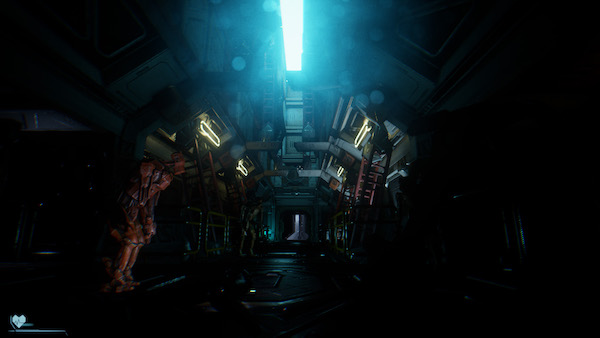
After completing the first chapter of the main “Story” mode, players can unlock an Endless Survival game mode specifically created to experience Syndrome in Virtual Reality. In the Endless Survival mode, players are trapped in a part of the spaceship where they scavenge surroundings for weapons and supplies, facing wave after wave of enemies set on destroying and dismembering everything in sight.
Syndrome has been nominated for several awards, including AMG’s Best Graphics Award and Reboot Develop’s Best Indie Award. Syndrome is now available on Sony Playstation 4 and PC with a game mode compatible for PS VR, HTC Vive and Oculus Rift.
Find out more about Syndrome at their Official Website!
In the TV series Lost, we see a character named Desmond Hume residing in an underground facility, driven borderline insane by the monotony of his daily routine. Desmond is required to regularly enter a series of numbers on a computer every 108 minutes. While nothing as redundant occurs in The Bunker, the game’s tone, setting, and non-linear storytelling feel directly inspired by a show like Lost.
The Bunker, developed by Slendy Interactive in partnership with Wales Interactive, begins in a post-nuclear war era with the birth of our protagonist, John. He’s born in an underground shelter that houses less than 60 people. However, we quickly flash forward 30 years later to find John alone with his mother. Thus the central mystery reveals itself: what happened to everyone else?
An Alarm Sounds
What separates Slendy Interactive’s first outing from other titles is its aesthetics: everything is live-action. With a runtime of roughly 90 plus minutes, you essentially have yourself a movie. Now the industry hasn’t mastered manipulating a real human being completely. The Bunker is simply a point-and-click thriller, but is still impressive for a developer’s debut game. Unless you’re slow to select the next location and make John stand around looking clueless, the gaming experience itself doesn’t distract from the cinematic quality.
In the midst of John’s daily routine, an error message indicates a system failure somewhere in the facility. This is where the conflict and John’s unease begins. He hasn’t traversed from his floor with his mother much, if ever. Visiting other floors to resolve a mechanical problem sets his nerves off. Actor Adam Brown‘s performance, especially his facial expressions, effectively communicate John’s dread with his predicament.
Repressed Memories
As you take John along on his mission to repair the electrical and air filter systems, Brown moves timidly along each darkened hallway. With each floor you explore, a seemingly repressed memory rears its ugly head. We begin to see what unfolds with the shelter’s previous occupants via flashback, culminated in the game’s final moments. It’s as disturbing as it is gratifying.
Actress Sarah Greene plays John’s mother and she covers every range of human emotion fathomable by the game’s end. However, I’m intent on avoiding spoilers, so I’ll reference these specifics no further. If you ever throw up your hands during The Bunker‘s story, which can take a stretch to get into, be assured there’s absolutely a pay-off.
Lesser Demons
Outside of our two leads, the minor characters deliver their lines in a most uncomfortably wooden fashion. Then at certain points where John is simply standing in a hallway, the musical score swells as if hinting at a big reveal or jump scare, but nothing comes.
Mechanically speaking, the game is ultimately not intended to be any sort of challenge. It’s rather unfortunate though, as glimmers of a Quick Time Event (QTE) appear all-too briefly. However, the average gamer will pass these QTEs with flying colors and then some.
Despite any criticisms I levy against The Bunker, the story and high production value compel you to forgive them. This feels like a full-fledged Hollywood production but occasionally the actors arbitrarily stop and wait for a button click. They even filmed this in a real decommissioned bunker. This pays off as it makes your environment feel legitimately previously occupied.
It might be too early for declarations, but I’m predicting this title could see the same success as last year’s live-action mystery game Her Story.
Grade: B
It’s Halloween time, and today I am counting down my top favorite horror Pops that represent the season. It’s easy to say Funko is a huge fan of the horror genre considering the dozens of Pops they’ve designed and then the legion of variants of those Pops. Some of these were tough choices and some are still fighting it out!
Deadite
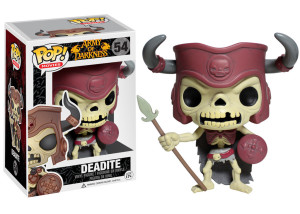 To start the list is a classic staple minion monster, the Deadite, raised from the Necronomicon in Army of Darkness by our favorite B-Movie hero, Ash. This monster provides scares and laughs as you watch them get blown apart and then complain about coming to pieces.
To start the list is a classic staple minion monster, the Deadite, raised from the Necronomicon in Army of Darkness by our favorite B-Movie hero, Ash. This monster provides scares and laughs as you watch them get blown apart and then complain about coming to pieces.
Bicycle Girl Zombie
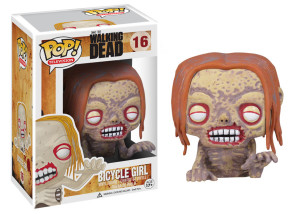
Probably the most well known zombie in the Walking Dead universe, this is one of the few zombies in the series to have existed in both the comics and television. Bicycle Girl is so famous that they even made a story about how she became zombified after she appeared on The Walking Dead season 1.
Pinhead
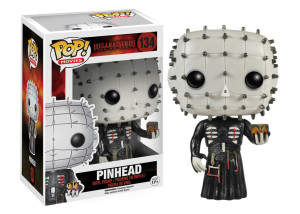
Clive Barker’s famous monster has spawned nearly countless stories of pain and suffering about those who try to meddle with Pinhead. The figure itself isn’t too intricate but it’s a marked achievement that they got something so evil into Pop form and it still retains elements that are both cute and horrifying.
Leatherface
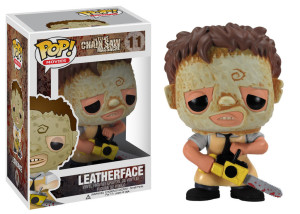
The first official slasher on our list, this guy had some stiff competition with Ghostface from the Scream movies, but hey, I like chainsaws so he wins. Neither one has many variants, but considering how much impact Leatherface has on creating new generations of horror stories, including Scream, it’s tough not to consider his Pop.
Twisty
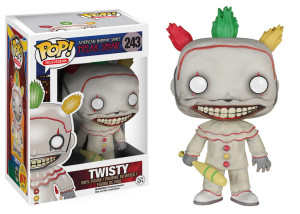
Twisty’s is one of the most intense stories out of American Horror Story, and for that he was rewarded with his own Pop. They even gave him a special limited edition “Freddy” version, and another San Diego Comic Con variant tacked onto that. The only other clown that I might have considered would have been Pennywise from It, but I think Funko did a much better job making Twisty than they did King’s clown of nightmares.
Sam
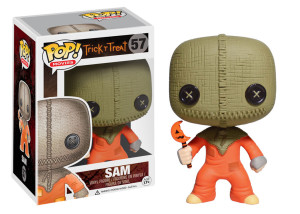
Arguably the main character and storyteller for the most iconic Halloween movie anthology to date, Trick r’ Treat, Sam is the spirit of Halloween, and if you don’t play by the rules you’re on his list. His Pop isn’t too intricate, but that’s part of the fun: you’d never expect such a powerful and evil being in a cute and seemingly harmless wrapper.
Universal Monsters
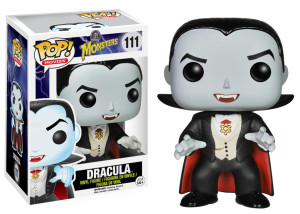
Funko really outdid themselves in paying homage to the greats: the original monsters that gave all of our modern ones so much to aspire to over the years. These Pops have been released in metallic, glow in the dark, black and white, and flocked variants. Several of those variants are available in sets featured exclusively at high profile conventions.
Michael Myers
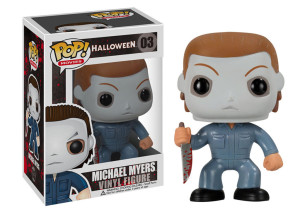
The most famous and storied slasher on the list, Michael Myers was on the fast track to become a Pop and has had several chase variants to his name. Honestly though I prefer the vanilla version, unless there’s a blood splattered version I haven’t heard about.
Now for our top Horror Pop…
A Grudge Match!
Freddy Krueger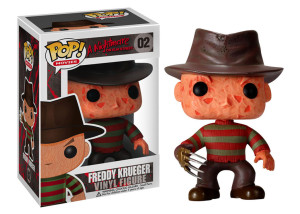
VS
Jason Voorhees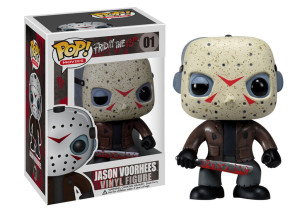
Without a doubt, Funko knew was it was doing making these 2 the first Horror classics to get their Pops. The fight between Freddy and Jason has been legendary, and so closely matched that even Hollywood called it a draw. It’s a classic match against sadistic brains versus unstoppable brawn. This year this also released a shirt to honor the blood feud between Freddy and Jason.
So who do you think would win, Freddy or Jason? Sound off in the comments, and Happy Halloween! Don’t forget to try our Ten Family Friendly Halloween Movies to help lull the kiddos into a candy coma! Afterward, you can set the mood with Five Albums to Flesh Out Your Halloween Playlist and huddle under the covers with Netflix and Chilling – Halloween Movie Edition. Any other off-beat Halloween suggestions to throw our way? You can let us know on Twitter @SubCultured or come party like its 1599 in our Discord server!





